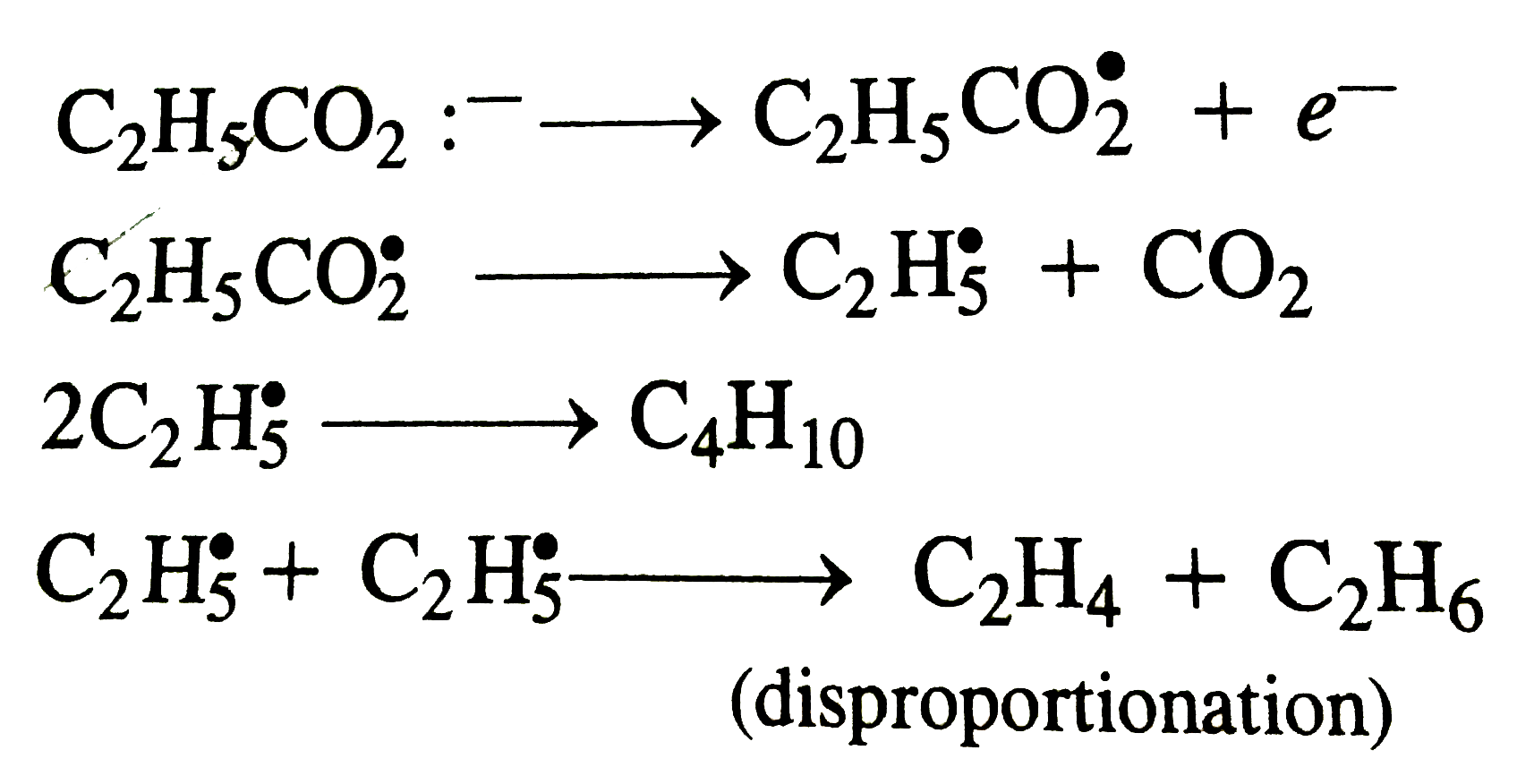The Kolbe's electrolysis proceeds via
A
Nucleophilic substitution mechanism
B
Electrophilic addition mechanism
C
Free radical mechanism
D
Electrophilic substitution reaction.
Video Solution
Text Solution
The correct Answer is:C
For example when sodium propionate is electrolysed, n-butane, ehtane, ethylene are obtained. The propionate ion discharges at the anode to form a free radical.

|
Topper's Solved these Questions
Similar Questions
Knowledge Check
Kolbe's Electrolysis completed by
AIonic followed by free radical mechanismBFree radical followed by ionic mechanismCOnly ionic mechanismDOnly free radical mechanismHydrolysis of an ester gives a carboxylic acid which on Kolbe's electrolysis yields ethane. The ester is
AEthyl methonoateBMethyl ethanoateCPropylamineDEthylamineOne of the following cannot be prepared by Kolbe's electrolytic process?
AC2H2BC2H6CCH4DC2H4
Which of the following is not prepared by Kolbe's electrolytic process?
View SolutionHydrolysis of an ester gives a carboxylic acid which on Kolbe's electrolysis yields ethane. The ester is
View SolutionBase hydrolysis of an ester with NaOH gives a carboxylic acid whose sodium salt on Kolbe's electrolysis yields ethane. The ester is
View SolutionHydrolysis of an ester gives a carboxylic acid which on Kolbe's electrolysis yields ethane. The ester is :
View SolutionHydrolysis of an ester gives a carboxylic acid which on Kolbe's electrolysis yields ethane. The ester is
View Solution
